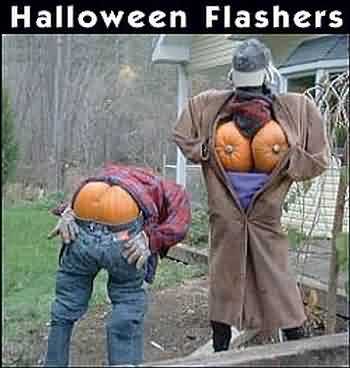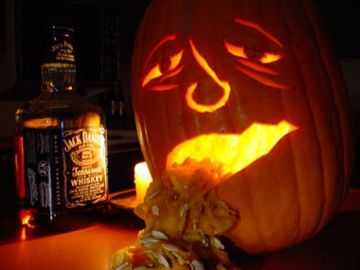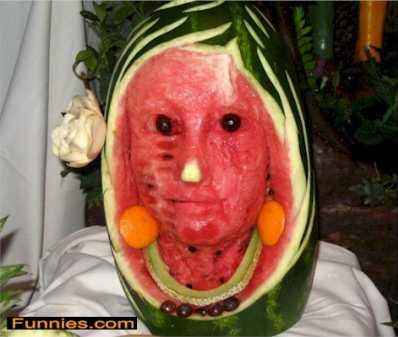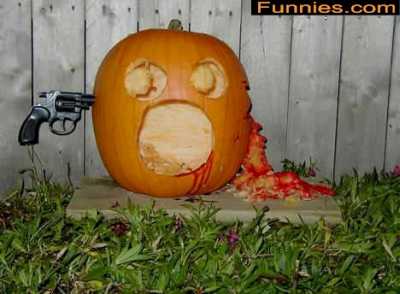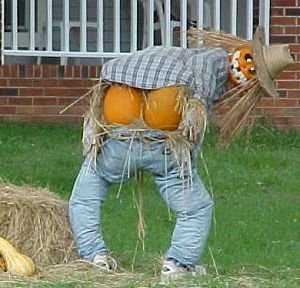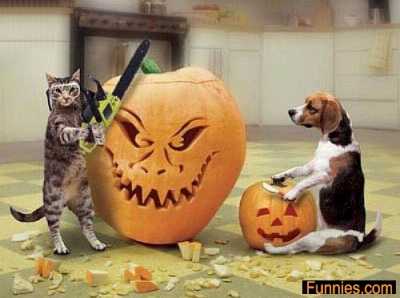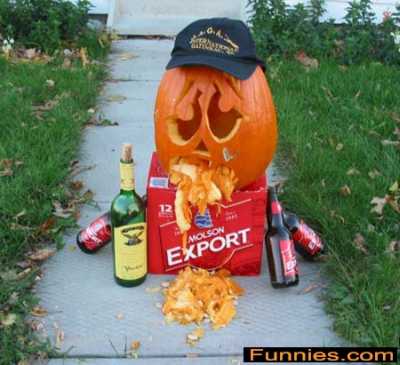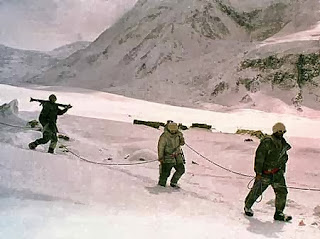
Welcome to 'OZ' - The 'Other' Side of the Rainbow!! Posting is at 10AM, Noon and 2PM CST daily. Up to 12 days of posts on the main page. The archives have more. You can forward posts by clicking on the envelope at the bottom of the post. Enjoy your stay! *** If you need to contact me, or have a copyright issue, please use the "Contact The Wizard" form on the left side of 'OZ'. Original source and author is cited and credited in each post where possible. ***
***Disclaimer***
Disclaimer: The Wizard of 'OZ' makes no money from 'OZ' - The 'Other' Side of the Rainbow. 'OZ' is 100 % paid ad-free
Thursday, October 31, 2013
Want Asylum? Prove That You're Gay
Prove your sexuality, border patrol agents are are telling asylum seekers in the UK. Amid tighter border control in a nation rapidly growing in diversity, England's Home Office and border agency (UKBA) is asking people seeking refuge to "prove" that they are gay and have undergone persecution for their sexuality.
--more at GayLife.About.com
Samhain
Shall burn
And the wheel of life
Shall turn
And the dead will come home, on Samhain
And then
The night sky
On a lunar light
midnight
And the dead will come home, on Samhain
Little children
Dress like beasts
In the lamp-lit
Dark streets
And the dead come alive, on Samhain
Come away
From this island earth
Come back to
The moment of your birth
And the dead come alive, on Samhain
Ever since
The dawn of time
This day has been for them
Lay your minds on the line
And await the dead, on Samhain
When the wall
Grows thin
Allows the dead
To come in
So await the dead, on Samhain
I will see you, come Samhain
------------------
Glen Whitman, Gather.com
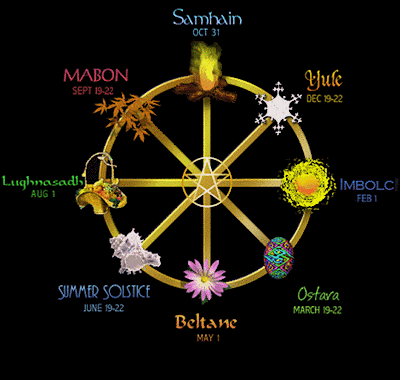
*Pronounced: SOW-in (as in "cow"), (or sometimes sew-WIN)
For more pagan pronunciations, click here.
**Read about Samhain
Wednesday, October 30, 2013
The Amphicar
The Amphicar was the only amphibious automobile ever mass-produced for sale to the public. The German vehicle was designed by Hanns Trippel, creator of the war-time Schwimmwagen and manufactured by the Quandt Group at Lübeck and at Berlin-Borsigwalde. Its name is a combination of "amphibious" and "car".
The powerplant was the 1.1 L (1147 cc/69 in³) engine from the British Triumph Herald. This engine predated the Triumph Slant-4, which was also found in the early SAAB 99. It comes with a power output of 43 hp (32 kW) at 4750 rpm. Called the "Model 770", the Amphicar could achieve speeds of 7 knots in the water and 70 mph (113 km/h) on land. Nevertheless, some would comment that it wasn't a very good car and not a very good boat either because of this modest performance in or out of water.
Production started in 1961, after 1963, cars were assembled from the parts which had been supplied for the over-estimated sales of 20,000 per year, and production ended in 1968. Most cars were sold in the United States. Cars were sold in the UK from 1964. Total production was 3,878 vehicles before the company folded.
Amphicars were plagued with reliability problems, including faulty waterproofing on the engine that occasionally caused it to seize while driving through water (just in case, Amphicars came with an oar) and rapid corrosion of most surfaces. The vehicles have been described as "marginal in water, and not too fun on land", due to the bathtub shaped structure. However, they are one of the few amphibious production cars. The amphicar works well in snow, but has many limitations otherwise.
*Wikipedia
--more--> http://www.amphicar.com/history.htm
Production started in 1961, after 1963, cars were assembled from the parts which had been supplied for the over-estimated sales of 20,000 per year, and production ended in 1968. Most cars were sold in the United States. Cars were sold in the UK from 1964. Total production was 3,878 vehicles before the company folded.
Amphicars were plagued with reliability problems, including faulty waterproofing on the engine that occasionally caused it to seize while driving through water (just in case, Amphicars came with an oar) and rapid corrosion of most surfaces. The vehicles have been described as "marginal in water, and not too fun on land", due to the bathtub shaped structure. However, they are one of the few amphibious production cars. The amphicar works well in snow, but has many limitations otherwise.
*Wikipedia
--more--> http://www.amphicar.com/history.htm
**Photo Credit D. B. Austen
An Early Halloween Story
A bald man with a wooden leg gets invited to a Halloween party. He doesn't know what costume to wear to hide his head and his leg so he writes to a costume company to explain his problem. A few days later, he received a parcel with the following note:
Dear Sir,
Please find enclosed a pirate's outfit. The spotted handkerchief will cover your bald head and, with your wooden leg, you will be just right as a pirate.
Very truly yours,
Acme Costume Co.
The man thinks this is terrible because they have emphasized his wooden leg and so he writes a letter of complaint. A week goes by and he receives another parcel and a note, which says:
Dear Sir,
Please find enclosed a monk's habit. The long robe will cover your wooden leg and, with your bald head, you will really look the part.
Very truly yours,
Acme Costume Co.
Now the man is really upset since they have gone from emphasizing his wooden leg to emphasizing his bald head so again he writes the company another nasty letter of complaint. The next day he gets a small parcel and a note, which reads:
Dear Sir,
Please find enclosed a bottle of molasses and a bag of crushed nuts. Pour the molasses over your bald head, pat on crushed nuts, stick your wooden leg up your ass and go as a caramel apple.
Very truly yours,
Acme Costume Co.
Dear Sir,
Please find enclosed a pirate's outfit. The spotted handkerchief will cover your bald head and, with your wooden leg, you will be just right as a pirate.
Very truly yours,
Acme Costume Co.
The man thinks this is terrible because they have emphasized his wooden leg and so he writes a letter of complaint. A week goes by and he receives another parcel and a note, which says:
Dear Sir,
Please find enclosed a monk's habit. The long robe will cover your wooden leg and, with your bald head, you will really look the part.
Very truly yours,
Acme Costume Co.
Now the man is really upset since they have gone from emphasizing his wooden leg to emphasizing his bald head so again he writes the company another nasty letter of complaint. The next day he gets a small parcel and a note, which reads:
Dear Sir,
Please find enclosed a bottle of molasses and a bag of crushed nuts. Pour the molasses over your bald head, pat on crushed nuts, stick your wooden leg up your ass and go as a caramel apple.
Very truly yours,
Acme Costume Co.
Tuesday, October 29, 2013
$10 Smartphone to digital microscope conversion!
The world is an interesting place, but it's fascinating up close. Through the lens of a microscope you can find details that you would otherwise never notice. But now you can.
This instructable will show you how to build a stand for about $10 that will transform your smartphone into a powerful digital microscope. This DIY conversion stand is more than capable of functioning in an actual laboratory setting. With magnification levels as high as 175x, plant cells and their nuclei are easily observed! In addition to allowing the observation of cells, this setup also produces stunning macro photography.
The photos in this instructable were taken with an iPhone 4S. Click on the image to go to the site, see how as well as a video on how its done.
This instructable will show you how to build a stand for about $10 that will transform your smartphone into a powerful digital microscope. This DIY conversion stand is more than capable of functioning in an actual laboratory setting. With magnification levels as high as 175x, plant cells and their nuclei are easily observed! In addition to allowing the observation of cells, this setup also produces stunning macro photography.
The photos in this instructable were taken with an iPhone 4S. Click on the image to go to the site, see how as well as a video on how its done.
Thanks, Gary
More Halloween Jokes
Q. Why do girl ghosts go on diets? A. So they can keep their ghoulish figures.
Q. When does a ghost have breakfast? A. In the moaning.
Q. What do ghosts drink at breakfast? A. Coffee with scream and sugar.
Q. Where does a ghost go on vacation? A. Mali-boo.
Q. Where does a ghost go on Saturday night? A. Anywhere where he can boo-gie.
Q. Where did the ghost get it's hair done? A: At the boo-ty shop.
Q. Riddle: the maker does not want, it the buyer does not use it, and the user does not see it, what is it? A. a coffin.
Q. What do they teach in witching school? A. Spelling.
Q. Why does a witch ride a broom? A. Vacuum cleaners get stuck at the end of the cord.
Q. What do you call a witch's garage? A. A broom closet.
Q. What do you call two witches living together? A. Broommates.
Q. Why don't mummies take vacations? A. They're afraid they'll relax and unwind.
Q. What is a witch's favorite subject in school? A. Spelling
Q: Why can't Boy Ghosts make babies?? A: Because they have Hollow-Weenies!
Q. Why did the man with a knife in his head cross the street? A. He was dying to get to the other side!!
Q. Where do ghosts go out? A. Where they can get boooooo-ze.
Q. Where do ghosts go out? A. Where they can get sheet-faced.
Q. What did the mother ghost say to her kids in the car? A. Fasten your sheet belts.
Q. Why didn't the skeleton go to see a scary movie? A. He didn't have the guts.
Q. What did the corpse' mom do when her son was bad? A. Ground him
Q. Why was the mummy so tense? A. Because he was all wound up.
Q. Why did the vampire need mouthwash? A. Because he had bat breath.
Q. Why don't ghost have bands? A. They get booooooooooed.
Q. What do you call a monster who poisons corn flakes? A. A cereal killer.
Q. Who are some of the werewolves cousins? A. The whatwolves, the whowolves and the when wolves.
Q. What did the bird say on Halloween? A. Trick or tweet!
Q. Why do skeletons drink milk? A. To help their bones!
Q. What's a Vampire's least favourate song? A. Another one bites the dust!
Q. What is a Skeleton's favorite song. A. Bad to the Bone
Q. Whats a ghost's favorate type of car? A. A boo-ick
Q. Where do ghost go for fun? A. To the boo-vies
Q. What's a skeletons favorite part of the house? A. the living room
Q. What did the teenage witch ask her mother on Halloween? A. Can i have the keys to the broom tonight.
Q. What do u get when there's a witch in the desert? A. You get a sandwich.
W. Why do ghosts like to ride elevators? A.it raises their spirits.
Q. Why can't a Skeleton Lift Weights? A. He's all bone & no muscle.
Q. What is a vamire's favorite fruit? A: A necktarine
Q. What do the skeletons say be for eating? A. Bone appetite
Q. What do gosts call there girl friends? A. There goul friends.
Q. How did the ghost say goodbye to the vampire? A. So long sucker!
Q. What did the goblin say to the witch? A. I don't know you tell me!
Q. Why dident the skeleten go to the halloween party? A. Becuse he had no body to go with.
Q. What is a ghost's favorite band? A. The Boos Brothers
Q. What did Dracula have for dessert? A. Whine & Ice scream
Q. What is Dracula's favorite restaraunt? A. Murder King
Q. What is a Ghost's favorite food? A. HamBoogers
Q. What is in a ghost's nose? A. Boogers
Q. What was the mummies' vacation like? A. Nobody knows. They were too wrapped up to tell us.
Q: What did tha boy ghost say to the girl ghost? A: You are the most booooooooo-tiful thing I have ever seen!
Q. Why does a cemetery have to keep a fence around it? A. Because people are dying to get in.
Q. What do you give to a pumpkin who is trying to quit smoking? A. A pumpkin patch!!!
Q. Where do vampires keep their money? A: The blood bank!!!
Q. Who are some of the were-wolves cousins? A. The what-wolves and when-wolves.
Q. What did Dracula say after reading all these jokes? A. They suck! (or they bite!)
Monday, October 28, 2013
1942 Flying Fortress
December 1942, a year after Pearl Harbor. "Production. B-17 heavy bomber. A nearly complete B-17F 'Flying Fortress' at Boeing's Seattle plant." (Photo by Andreas Feininger for the Office of War Information)
To see a much, MUCH larger picture, click here. You can also order the print.
*Thanks, Gary
To see a much, MUCH larger picture, click here. You can also order the print.
*Thanks, Gary
What a guy!
It is important for men to remember that as women grow older, it becomes harder for them to maintain the same quality of housekeeping as when they were younger. When you notice this, try not to yell at them. Some are oversensitive, and there's nothing worse than an oversensitive woman.
My name is John. Let me relate how I handled the situation with my wife, Lin. When I retired a few years ago, it became necessary for Lin to get a full-time job along with her part-time job, both for extra income and for the health benefits that we needed. Shortly after she started working I noticed she was beginning to show her age. I usually get home from the golf club about the same time she gets home from work.
Although she knows how hungry I am, she almost always says she has to rest for half an hour or so before she starts dinner. I don't yell at her. Instead, I tell her to take her time and just wake me when she gets dinner on the table. I generally have lunch in the Men's Grill at the club so eating out is not reasonable. I'm ready for some home-cooked grub when I hit that door.
She used to do the dishes as soon as we finished eating, but now it's not unusual for them to sit on the table for several hours after dinner. I do what I can by diplomatically reminding her several times each evening that they won't clean themselves. I know she really appreciates this, as it does seem to motivate her to get them done before she goes to bed.
Another symptom of aging is complaining. I think. For example she will say that it is difficult for her to find time to pay the monthly bills during her lunch hour.
But, boys, we take ' em for better or worse, so I just smile and offer encouragement. I tell her to stretch it out over two or even three days. That way she won't have to rush so much. I also remind her that missing lunch completely now and then wouldn't hurt her any -- if you know what I mean. I like to think tact is one of my strong points.
When doing simple jobs, she seems to think she needs more rest periods. She had to take a break when she was only half-finished mowing the yard. I try not to make a scene. I'm a fair man. I tell her to fix herself a nice, big, cold glass of freshly squeezed lemonade and just sit for a while. And, as long as she is making one for herself, she may as well make one for me too.
I know that I probably look like a saint in the way I support Lin. I'm not saying that showing this much consideration is easy. Many men will find it difficult. Some will find it impossible! Nobody knows better than I do how frustrating women get as they get older. However, guys, even if you just use a little more tact and less criticism of your aging wife because of this article, I will consider that writing it was well worthwhile. After all, we are put on this earth to help each other.
Signed,
John
EDITOR'S NOTE:
John died suddenly on February 7 of a perforated rectum. The police report says he was found with a Calloway extra-long 50-inch Big Bertha Driver II golf club jammed up his rear end, with barely 5 inches of grip showing, and a sledge hammer laying nearby. His wife, Lin, was arrested and charged with murder. The all-woman jury took only 10 minutes to find her Not Guilty, accepting her defense that John, somehow without looking, accidentally sat down on his golf club.
My name is John. Let me relate how I handled the situation with my wife, Lin. When I retired a few years ago, it became necessary for Lin to get a full-time job along with her part-time job, both for extra income and for the health benefits that we needed. Shortly after she started working I noticed she was beginning to show her age. I usually get home from the golf club about the same time she gets home from work.
Although she knows how hungry I am, she almost always says she has to rest for half an hour or so before she starts dinner. I don't yell at her. Instead, I tell her to take her time and just wake me when she gets dinner on the table. I generally have lunch in the Men's Grill at the club so eating out is not reasonable. I'm ready for some home-cooked grub when I hit that door.
She used to do the dishes as soon as we finished eating, but now it's not unusual for them to sit on the table for several hours after dinner. I do what I can by diplomatically reminding her several times each evening that they won't clean themselves. I know she really appreciates this, as it does seem to motivate her to get them done before she goes to bed.
Another symptom of aging is complaining. I think. For example she will say that it is difficult for her to find time to pay the monthly bills during her lunch hour.
But, boys, we take ' em for better or worse, so I just smile and offer encouragement. I tell her to stretch it out over two or even three days. That way she won't have to rush so much. I also remind her that missing lunch completely now and then wouldn't hurt her any -- if you know what I mean. I like to think tact is one of my strong points.
When doing simple jobs, she seems to think she needs more rest periods. She had to take a break when she was only half-finished mowing the yard. I try not to make a scene. I'm a fair man. I tell her to fix herself a nice, big, cold glass of freshly squeezed lemonade and just sit for a while. And, as long as she is making one for herself, she may as well make one for me too.
I know that I probably look like a saint in the way I support Lin. I'm not saying that showing this much consideration is easy. Many men will find it difficult. Some will find it impossible! Nobody knows better than I do how frustrating women get as they get older. However, guys, even if you just use a little more tact and less criticism of your aging wife because of this article, I will consider that writing it was well worthwhile. After all, we are put on this earth to help each other.
Signed,
John
EDITOR'S NOTE:
John died suddenly on February 7 of a perforated rectum. The police report says he was found with a Calloway extra-long 50-inch Big Bertha Driver II golf club jammed up his rear end, with barely 5 inches of grip showing, and a sledge hammer laying nearby. His wife, Lin, was arrested and charged with murder. The all-woman jury took only 10 minutes to find her Not Guilty, accepting her defense that John, somehow without looking, accidentally sat down on his golf club.
*Thanks, Gary
Sunday, October 27, 2013
Halloween Jokes
Q. What do goblins and ghosts drink when they're hot and thirsty on Halloween? A. Ghoul-aid!!!
Q. What is a Mummie's favorite type of music? A. Wrap!!!!!
Q. Why do demons and ghouls hang out together? A. Because demons are a ghouls best friend!
Q. What's a monster's favorite bean? A. A human bean.
Q. Why can't the boy ghost have babies? A. Because he has a Hallo-weenie.
Q. What do you call a witch who lives at the beach? A. A sand-witch.
Q. Where does a ghost go on Saturday night? A. Anywhere where he can boo-gie.
Q. What did the skeleton say to the vampire? A. You suck.
Q. What do ghosts say when something is really neat? A.Ghoul
Q. Why did the ghost go into the bar? A. For the Boos.
Q. Why was the girl afraid of the vampire? A. He was all bite and no bark.
Q. Why did the game warden arrest the ghost? A. He didn't have a haunting license.
Q. Why didn't the skeleton dance at the party? A. He had no body to dance with.
Q. Where does Count Dracula usually eat his lunch? A. At the casketeria.
Q. What happens when a ghost gets lost in the fog? A. He is mist.
Q. Where did the goblin throw the football? A. Over the ghoul line.
Q. Why doesn't Dracula mind the doctor looking at his throat. A. Because of the coffin.
Q. Why is a ghost such a messy eater? A. Because he is always a goblin.
Q. What do you call a goblin who gets too close to a bonfire? A. A toasty ghosty.
Q. Why did the Vampire read the Wall Street Journal? Q. He heard it had great circulation.
Q. What tops off a ghost's ice cream sundae? A. Whipped scream.
Q. What do you give a skeleton for valentine's day? A. Bone-bones in a heart shaped box.
Q. What are ghosts' favorite kind of streets? A. Dead ends
Q. What is a vampires favorite holiday? A. Fangsgiving
Q. What kind of makeup do ghosts wear? A. Mas-scare-a.
Q. Why did the skeleton cross the road? A. To go to the body shop.
Q. What happens when two vampires meet? A. It was love at first bite!
Q. Who was the most famous ghost detective? A. Sherlock Moans.
Q. What do you call two spiders that just got married? A. Newlywebbed
Q. What is a ghosts favorite place on the web? A. www.halloween.com!
Q. Who was the most famous witch detective? A. Warlock Holmes
Q. What did the ghost say to the man at the coffee shop? A. Scream or sugar!
Q. Who was the most famous skeleton detective? A. Sherlock Bones.
Q. Who was the most famous French skeleton? A. Napoleon bone-apart
Q. Which building does Dracula visit in New York? A. The Vampire State Building.
Q. Where do most werewolves live? A. In howllywood, California
Q. Where do most goblins live? A. in North and South Scarolina.
Q. Where does a ghost refuel his porche? A. At a ghastly station.
Q. What do Italian's eat on Halloween? A. Fettucinni Afraid-o (Ha ha ha)
Q. Why did the skeleton go disco dancing? A. to see the boogy man.
Q. What do witches use in their hair? A. scare-spray
Q. What do you call a little monsters parents A. mummy and deady
Q. What do you get when you cross a black cat with a lemon. A. sour-puss
Q. How do you scare a mummy A. with a yummy dummy in a crash test crummy.
Q. What do you get when you cross a vampire with the internet? A. blood-thirsty hacker baby
Q. What do you get when you cross a pumpkin with a skwaush? A. a squashed pumpkin pie.
Q. Why do ghosts shiver and moan? A. It's drafty under that sheet.
Q. What instrument do skeleton play? A: Trom-BONE.
Q. What do ghosts eat for breakfast? A. Boo-Berries.
Q. What is a vampires favorite place on the web? A. www.halloween.com!
Q: Why did't the skeleton cross the road? A: He had no guts.
Q. Why do vampires scare people? A. They are bored to death!
Q. How can you tell a vampire likes baseball? A. Every night he turns into a bat.
Q. What's it like to be kissed by a vampire? A. It's a pain in the neck.
Q. How can you tell when a vampire has been in a bakery? A. All the jelly has been sucked out of the jelly doughnuts.
Q. What songs does Dracula hate? A. "You Are My Sunshine" and "Sunshine on my Shoulders.
Q. What did the Mummy movie director say when the final scene was done? A. Ok, that's a wrap.
Q. How does a girl vampire flirt? A. She bats her eyes.
Q. What is a vampires least favorite food? A.Steak
Q. What's it called when a vampire has trouble with his house? A. A grave problem.
Q. Why doesn't anybody like Dracula? A. He has a bat temper.
Q. Why did Dracula go to the dentist? A. He had a fang-ache.
Q. Why are vampires like false teeth? A. They all come out at night.
Q. Who does Dracula get letters from? A. His fang club.
Q. What kind of key does a skeleton use? A. A skeleton key.
Q. What kind of gum do ghosts chew? A. Boo Boo Gum.
Q. Why did Dracula take cold medicine? A. To stop his coffin.
Q. Why does Dracula wear patent leather shoes? A. Sandals don't look good with his tuxedo.
Q. How do you keep a monster from biting his nails? A. Give him screws.
Q. What can't you give the headless horseman? A. A headache.
Q. Why did the headless horseman go into business? A. He wanted to get ahead in life.
Q. What is a ghosts favorite sale? A. A white sale.
Q. What kind of tie does a ghost wear to a formal party? A. A boo-tie.
Q. What's a ghosts favorite desert? A. Boo-berry pie.
Q. What type of dog does every vampire have? A. Bloodhound!
Q. What's a monsters favorite desert? A. I-Scream!!
Q. What is a Mummie's favorite type of music? A. Wrap!!!!!
Q. Why do demons and ghouls hang out together? A. Because demons are a ghouls best friend!
Q. What's a monster's favorite bean? A. A human bean.
Q. Why can't the boy ghost have babies? A. Because he has a Hallo-weenie.
Q. What do you call a witch who lives at the beach? A. A sand-witch.
Q. Where does a ghost go on Saturday night? A. Anywhere where he can boo-gie.
Q. What did the skeleton say to the vampire? A. You suck.
Q. What do ghosts say when something is really neat? A.Ghoul
Q. Why did the ghost go into the bar? A. For the Boos.
Q. Why was the girl afraid of the vampire? A. He was all bite and no bark.
Q. Why did the game warden arrest the ghost? A. He didn't have a haunting license.
Q. Why didn't the skeleton dance at the party? A. He had no body to dance with.
Q. Where does Count Dracula usually eat his lunch? A. At the casketeria.
Q. What happens when a ghost gets lost in the fog? A. He is mist.
Q. Where did the goblin throw the football? A. Over the ghoul line.
Q. Why doesn't Dracula mind the doctor looking at his throat. A. Because of the coffin.
Q. Why is a ghost such a messy eater? A. Because he is always a goblin.
Q. What do you call a goblin who gets too close to a bonfire? A. A toasty ghosty.
Q. Why did the Vampire read the Wall Street Journal? Q. He heard it had great circulation.
Q. What tops off a ghost's ice cream sundae? A. Whipped scream.
Q. What do you give a skeleton for valentine's day? A. Bone-bones in a heart shaped box.
Q. What are ghosts' favorite kind of streets? A. Dead ends
Q. What is a vampires favorite holiday? A. Fangsgiving
Q. What kind of makeup do ghosts wear? A. Mas-scare-a.
Q. Why did the skeleton cross the road? A. To go to the body shop.
Q. What happens when two vampires meet? A. It was love at first bite!
Q. Who was the most famous ghost detective? A. Sherlock Moans.
Q. What do you call two spiders that just got married? A. Newlywebbed
Q. What is a ghosts favorite place on the web? A. www.halloween.com!
Q. Who was the most famous witch detective? A. Warlock Holmes
Q. What did the ghost say to the man at the coffee shop? A. Scream or sugar!
Q. Who was the most famous skeleton detective? A. Sherlock Bones.
Q. Who was the most famous French skeleton? A. Napoleon bone-apart
Q. Which building does Dracula visit in New York? A. The Vampire State Building.
Q. Where do most werewolves live? A. In howllywood, California
Q. Where do most goblins live? A. in North and South Scarolina.
Q. Where does a ghost refuel his porche? A. At a ghastly station.
Q. What do Italian's eat on Halloween? A. Fettucinni Afraid-o (Ha ha ha)
Q. Why did the skeleton go disco dancing? A. to see the boogy man.
Q. What do witches use in their hair? A. scare-spray
Q. What do you call a little monsters parents A. mummy and deady
Q. What do you get when you cross a black cat with a lemon. A. sour-puss
Q. How do you scare a mummy A. with a yummy dummy in a crash test crummy.
Q. What do you get when you cross a vampire with the internet? A. blood-thirsty hacker baby
Q. What do you get when you cross a pumpkin with a skwaush? A. a squashed pumpkin pie.
Q. Why do ghosts shiver and moan? A. It's drafty under that sheet.
Q. What instrument do skeleton play? A: Trom-BONE.
Q. What do ghosts eat for breakfast? A. Boo-Berries.
Q. What is a vampires favorite place on the web? A. www.halloween.com!
Q: Why did't the skeleton cross the road? A: He had no guts.
Q. Why do vampires scare people? A. They are bored to death!
Q. How can you tell a vampire likes baseball? A. Every night he turns into a bat.
Q. What's it like to be kissed by a vampire? A. It's a pain in the neck.
Q. How can you tell when a vampire has been in a bakery? A. All the jelly has been sucked out of the jelly doughnuts.
Q. What songs does Dracula hate? A. "You Are My Sunshine" and "Sunshine on my Shoulders.
Q. What did the Mummy movie director say when the final scene was done? A. Ok, that's a wrap.
Q. How does a girl vampire flirt? A. She bats her eyes.
Q. What is a vampires least favorite food? A.Steak
Q. What's it called when a vampire has trouble with his house? A. A grave problem.
Q. Why doesn't anybody like Dracula? A. He has a bat temper.
Q. Why did Dracula go to the dentist? A. He had a fang-ache.
Q. Why are vampires like false teeth? A. They all come out at night.
Q. Who does Dracula get letters from? A. His fang club.
Q. What kind of key does a skeleton use? A. A skeleton key.
Q. What kind of gum do ghosts chew? A. Boo Boo Gum.
Q. Why did Dracula take cold medicine? A. To stop his coffin.
Q. Why does Dracula wear patent leather shoes? A. Sandals don't look good with his tuxedo.
Q. How do you keep a monster from biting his nails? A. Give him screws.
Q. What can't you give the headless horseman? A. A headache.
Q. Why did the headless horseman go into business? A. He wanted to get ahead in life.
Q. What is a ghosts favorite sale? A. A white sale.
Q. What kind of tie does a ghost wear to a formal party? A. A boo-tie.
Q. What's a ghosts favorite desert? A. Boo-berry pie.
Q. What type of dog does every vampire have? A. Bloodhound!
Q. What's a monsters favorite desert? A. I-Scream!!
*halloween.com
Lou Reed Dead At 71
Legendary musician Lou Reed has died, Rolling Stone reported on Sunday.
He was 71.
Reed is best known for his work as guitarist, singer and songwriter for the Velvet Underground, and his solo career. Reed had a profound impact on American culture, introducing avant garde rock and pop art to mainstream music. His work with Andy Warhol is noted as one of the most important collaborations in contemporary culture.
His cause of death was not immediately revealed.
was an American rock musician, songwriter, and photographer. He was best known as guitarist, vocalist, and principal songwriter of The Velvet Underground, and for his solo career, which spanned several decades. Though the Velvet Underground were a commercial failure in the late 1960s, the group has gained a considerable cult following in the years since its demise and has gone on to become one of the most widely cited and influential bands of the era. As the Velvet Underground's vocalist and principal songwriter, Reed wrote about subjects of personal experience that rarely had been examined so openly in rock and roll, including sexuality and drug culture.[original research?
After his departure from the group, Reed began a solo career in 1972. He had a hit the following year with "Walk on the Wild Side", although he subsequently lacked the mainstream commercial success its chart status seemed to indicate. In 1975, Reed released a double album of feedback loops, Metal Machine Music, upon which he later commented, "No one is supposed to be able to do a thing like that and survive. Reed was known for his distinctive deadpan voice, poetic lyrics and for pioneering and coining the term Ostrich guitar.
In 2008, Reed married performance artist Laurie Anderson.
Lou Reed - This Magic Moment (on YouTube)
He was 71.
Reed is best known for his work as guitarist, singer and songwriter for the Velvet Underground, and his solo career. Reed had a profound impact on American culture, introducing avant garde rock and pop art to mainstream music. His work with Andy Warhol is noted as one of the most important collaborations in contemporary culture.
His cause of death was not immediately revealed.
was an American rock musician, songwriter, and photographer. He was best known as guitarist, vocalist, and principal songwriter of The Velvet Underground, and for his solo career, which spanned several decades. Though the Velvet Underground were a commercial failure in the late 1960s, the group has gained a considerable cult following in the years since its demise and has gone on to become one of the most widely cited and influential bands of the era. As the Velvet Underground's vocalist and principal songwriter, Reed wrote about subjects of personal experience that rarely had been examined so openly in rock and roll, including sexuality and drug culture.[original research?
After his departure from the group, Reed began a solo career in 1972. He had a hit the following year with "Walk on the Wild Side", although he subsequently lacked the mainstream commercial success its chart status seemed to indicate. In 1975, Reed released a double album of feedback loops, Metal Machine Music, upon which he later commented, "No one is supposed to be able to do a thing like that and survive. Reed was known for his distinctive deadpan voice, poetic lyrics and for pioneering and coining the term Ostrich guitar.
In 2008, Reed married performance artist Laurie Anderson.
Lou Reed - This Magic Moment (on YouTube)
The Hypnotist at a Senior Home
It was entertainment night at the senior citizens' center.
After the community singalong led by Alice at the piano, it was time for the star of the show: Claude the Hypnotist!
Claude explained that he was going to put the whole audience into a trance.
"Yes, each and every one of you and all at the same time." said Claude.
The excited chatter dropped to silence as Claude carefully withdrew from his waistcoat pocket a beautiful antique gold pocket watch and chain.
"I want you to keep your eyes on this watch" said Claude, holding the watch high for all to see.
"It is a very special and valuable watch that has been in my family for six generations" said Claude.
He began to swing the watch gently back and forth while quietly chanting, "Watch the watch --- Watch the watch ----Watch the watch."
The audience became mesmerized as the watch swayed back and forth.
The lights were twinkling as they were reflected from its gleaming surfaces.
A hundred and fifty pairs of eyes followed the movements of the gently swaying watch.
They were hypnotized.
And then, suddenly, the chain broke!!!
The beautiful watch fell to the stage and burst apart on impact.
"SHIT" said Claude.
It took them three days to clean the Senior Citizens Center, and Claude was never invited there again.
*Thanks, Joe
After the community singalong led by Alice at the piano, it was time for the star of the show: Claude the Hypnotist!
Claude explained that he was going to put the whole audience into a trance.
"Yes, each and every one of you and all at the same time." said Claude.
The excited chatter dropped to silence as Claude carefully withdrew from his waistcoat pocket a beautiful antique gold pocket watch and chain.
"I want you to keep your eyes on this watch" said Claude, holding the watch high for all to see.
"It is a very special and valuable watch that has been in my family for six generations" said Claude.
He began to swing the watch gently back and forth while quietly chanting, "Watch the watch --- Watch the watch ----Watch the watch."
The audience became mesmerized as the watch swayed back and forth.
The lights were twinkling as they were reflected from its gleaming surfaces.
A hundred and fifty pairs of eyes followed the movements of the gently swaying watch.
They were hypnotized.
And then, suddenly, the chain broke!!!
The beautiful watch fell to the stage and burst apart on impact.
"SHIT" said Claude.
It took them three days to clean the Senior Citizens Center, and Claude was never invited there again.
*Thanks, Joe
Saturday, October 26, 2013
The Sheldon Inversion
If it works for you, share the post
Share the post by clicking on the date at the bottom and paste in an email
ACTRESS MARCIA WALLACE DIES AT 70
Marcia Wallace, an actress known for her work on “The Bob Newhart Show” and “The Simpsons” – but who also had a New York stage background – has died at the age of 70, according to published reports.
Wallace played Carol Kester on "The Bob Newhart Show" and voiced Edna Krabappel on “The Simpsons,” which earned her an Emmy in 1992. As Edna Krabappel on The Simpsons, Marcia Wallace may be the only 4th-grade teacher to have the same student for 24 years. In 2004, Wallace published an autobiography, Don't Look Back, We're Not Going That Way. The comedian aired out the book's contents in the subtitle, which read How I Overcame a Rocky Childhood, a Nervous Breakdown, Breast Cancer, Widowhood, Fat, Fire & Menopausal Motherhood and Still Managed to Count My Lucky Chickens.
“She passed at 9 p.m. last night due to complications from breast cancer of which she was a long and proud survivor and advocate for women and healing,” her friend Cathryn Michon said. “Ironically, it was during breast cancer awareness month during which she was always a funny ray of hope for so many. I’m devastated.”
Wallace played Carol Kester on "The Bob Newhart Show" and voiced Edna Krabappel on “The Simpsons,” which earned her an Emmy in 1992. As Edna Krabappel on The Simpsons, Marcia Wallace may be the only 4th-grade teacher to have the same student for 24 years. In 2004, Wallace published an autobiography, Don't Look Back, We're Not Going That Way. The comedian aired out the book's contents in the subtitle, which read How I Overcame a Rocky Childhood, a Nervous Breakdown, Breast Cancer, Widowhood, Fat, Fire & Menopausal Motherhood and Still Managed to Count My Lucky Chickens.
“She passed at 9 p.m. last night due to complications from breast cancer of which she was a long and proud survivor and advocate for women and healing,” her friend Cathryn Michon said. “Ironically, it was during breast cancer awareness month during which she was always a funny ray of hope for so many. I’m devastated.”
Friday, October 25, 2013
10 Surprising and (Mostly) Easy Ways to Improve Your Memory
Improve your memory by clenching your right fist, chewing gum, walking, ignoring stereotypes, sniffing rosemary and more…
*Thanks for the link, Gary
 |
| Click here for the tips |
*Thanks for the link, Gary
Thursday, October 24, 2013
The 411 - Hallowe'en
Halloween or Hallowe'en (/ˌhæləˈwin, -oʊˈin, ˌhɒl-/; a contraction of "All Hallows' Evening") also known as All Hallows' Eve is a yearly celebration observed in a number of countries on October 31, the eve of the Western Christian feast of All Hallows (or All Saints) and the day initiating the triduum of Hallowmas, the time in the liturgical year dedicated to remembering the dead, including saints (hallows), martyrs, and all the faithful departed believers.
 According to many scholars, All Hallows' Eve is a Christianized feast initially influenced by Celtic harvest festivals, and festivals of the dead with possible pagan roots, particularly the Gaelic Samhain. Other scholars maintain that it originated independently of Samhain and has solely Christian roots.
According to many scholars, All Hallows' Eve is a Christianized feast initially influenced by Celtic harvest festivals, and festivals of the dead with possible pagan roots, particularly the Gaelic Samhain. Other scholars maintain that it originated independently of Samhain and has solely Christian roots. Typical festive Halloween activities include trick-or-treating (also known as "guising"), attending costume parties, decorating, carving pumpkins into jack-o'-lanterns, lighting bonfires, apple bobbing, visiting haunted attractions, playing pranks, telling scary stories, and watching horror films.
Typical festive Halloween activities include trick-or-treating (also known as "guising"), attending costume parties, decorating, carving pumpkins into jack-o'-lanterns, lighting bonfires, apple bobbing, visiting haunted attractions, playing pranks, telling scary stories, and watching horror films. The word Halloween or Hallowe'en dates to about 1745 and is of Christian origin. The word "Halloween" means "hallowed evening" or "holy evening". It comes from a Scottish term for All Hallows' Eve (the evening before All Hallows' Day). In Scots, the word "eve" is even, and this is contracted to e'en or een. Over time, (All) Hallow(s) E(v)en evolved into Halloween. Although the phrase "All Hallows'" is found in Old English (ealra hālgena mæssedæg, mass-day of all saints), "All Hallows' Eve" is itself not seen until 1556.
The word Halloween or Hallowe'en dates to about 1745 and is of Christian origin. The word "Halloween" means "hallowed evening" or "holy evening". It comes from a Scottish term for All Hallows' Eve (the evening before All Hallows' Day). In Scots, the word "eve" is even, and this is contracted to e'en or een. Over time, (All) Hallow(s) E(v)en evolved into Halloween. Although the phrase "All Hallows'" is found in Old English (ealra hālgena mæssedæg, mass-day of all saints), "All Hallows' Eve" is itself not seen until 1556.Today's Halloween customs are thought to have been influenced by folk customs and beliefs from the Celtic-speaking countries, some of which have pagan roots, and others which may be rooted in Celtic Christianity. Indeed, Jack Santino, an academic folklorist, writes that "the sacred and the religious are a fundamental context for understanding Halloween in Northern Ireland, but there as throughout Ireland an uneasy truce exists between customs and beliefs associated with Christianity and those associated with religions that were Irish before Christianity arrived." Historian Nicholas Rogers, exploring the origins of Halloween, notes that while "some folklorists have detected its origins in the Roman feast of
Pomona, the goddess of fruits and seeds, or in the festival of the dead called Parentalia, it is more typically linked to the Celtic festival of Samhain", which comes from the Old Irish for "summer's end". Samhain (pronounced sah-win or sow-in) was the first and most important of the four quarter days in the medieval Gaelic calendar and was celebrated in Ireland, Scotland and the Isle of Man. It was held on or about October 31 – November 1 and kindred festivals were held at the same time of year by the Brittonic Celts; for example Calan Gaeaf (in Wales), Kalan Gwav (in Cornwall) and Kalan Goañv (in Brittany). Samhain and Calan Gaeaf are mentioned in some of the earliest Irish and Welsh literature. The names have been used by historians to refer to Celtic Halloween customs up until the 19th century, and are still the Gaelic and Welsh names for Halloween.
 Samhain/Calan Gaeaf marked the end of the harvest season and the beginning of winter or the 'darker half' of the year. Like Beltane/Calan Mai, it was seen as a time when the spirits or fairies (the Sí) could more easily come into our world and were particularly active. The souls of the dead were also said to revisit their homes. Feasts were had, at which the souls of dead kin were beckoned to attend and a place set at the table for them. However, the spirits or fairies could also cause harm, and needed to be propitiated or warded-off. This is thought to have influenced today's Halloween customs. Bonfires, which were deemed to have protective and cleansing powers, were lit and sometimes used in divination rituals. At the household festivities in these areas, there were many rituals intended to divine the future of those gathered, especially with regard to death and marriage. Christian minister Eddie J. Smith has suggested that the bonfires have a later Christian origin and were used to scare witches of their awaiting punishment in hell.
Samhain/Calan Gaeaf marked the end of the harvest season and the beginning of winter or the 'darker half' of the year. Like Beltane/Calan Mai, it was seen as a time when the spirits or fairies (the Sí) could more easily come into our world and were particularly active. The souls of the dead were also said to revisit their homes. Feasts were had, at which the souls of dead kin were beckoned to attend and a place set at the table for them. However, the spirits or fairies could also cause harm, and needed to be propitiated or warded-off. This is thought to have influenced today's Halloween customs. Bonfires, which were deemed to have protective and cleansing powers, were lit and sometimes used in divination rituals. At the household festivities in these areas, there were many rituals intended to divine the future of those gathered, especially with regard to death and marriage. Christian minister Eddie J. Smith has suggested that the bonfires have a later Christian origin and were used to scare witches of their awaiting punishment in hell.In modern Ireland, Scotland, Mann and Wales, Halloween was celebrated by mumming and guising, the latter of which goes back at least as far as the 18th century. This involved people going from house to house in costume (or in disguise) reciting songs in exchange for food. It may have come from the Christian custom of souling (see below) or it may have an ancient Celtic origin, with the costumes being a means of imitating, or disguising oneself from, the spirits/fairies. In some places, young people dressed as the opposite gender. In parts of Wales, men went about dressed as fearsome beings called gwrachod. In parts of southern Ireland, the guisers included a hobby horse – a man dressed as a Láir Bhán (white mare) would lead youths house-to-house collecting food; by giving them food, the household could expect good fortune from the 'Muck Olla'. Elsewhere in Europe, mumming and hobby horses were a part of other festivals. However, they may have been "particularly appropriate to a night upon which supernatural beings were said to be abroad and could be imitated or warded off by human wanderers". When "imitating malignant spirits it was a very short step from guising to playing pranks". The guisers commonly played pranks in Ireland and the Scottish Highlands, and this practice spread to England in the 20th century.
The "traditional illumination for guisers or pranksters abroad on the night in some places was provided by turnips or mangel wurzels, hollowed out to act as lanterns and often carved with grotesque faces to represent spirits or goblins". These were common in parts of Ireland and the Scottish Highlands in 19th century. They were also found in Somerset. In the 20th century they spread to other parts of England and became generally known as jack-o'-lanterns.
 Today's Halloween customs are also thought to have been influenced by Christian dogma and practices derived from it. Halloween falls on the evening before the Christian holy days of All Hallows' Day (also known as All Saints', Hallowmas or Hallowtide) on November 1 and All Souls' Day on November 2, thus giving the holiday on October 31 the full name of All Hallows' Eve. These three days are collectively referred to as Hallowmas and are a time for honoring the saints and praying for the recently departed souls who have yet to reach Heaven. All Saints was introduced in the year 609, but was originally celebrated on May 13. In 835, it was switched to November 1 (the same date as Samhain) at the behest of Pope Gregory IV, on the "practical grounds that Rome in summer could not accommodate the great number of pilgrims who flocked to it", and perhaps because of public health considerations regarding Roman Fever, a disease that claimed a number of lives during the sultry summers of the region. Some have suggested this was due to Celtic influence, while others suggest it was a Germanic idea.
Today's Halloween customs are also thought to have been influenced by Christian dogma and practices derived from it. Halloween falls on the evening before the Christian holy days of All Hallows' Day (also known as All Saints', Hallowmas or Hallowtide) on November 1 and All Souls' Day on November 2, thus giving the holiday on October 31 the full name of All Hallows' Eve. These three days are collectively referred to as Hallowmas and are a time for honoring the saints and praying for the recently departed souls who have yet to reach Heaven. All Saints was introduced in the year 609, but was originally celebrated on May 13. In 835, it was switched to November 1 (the same date as Samhain) at the behest of Pope Gregory IV, on the "practical grounds that Rome in summer could not accommodate the great number of pilgrims who flocked to it", and perhaps because of public health considerations regarding Roman Fever, a disease that claimed a number of lives during the sultry summers of the region. Some have suggested this was due to Celtic influence, while others suggest it was a Germanic idea.By the end of the 12th century they had become holy days of obligation across Europe and involved such traditions as ringing church bells for the souls in purgatory. In addition, "it was customary for criers dressed in black to parade the streets, ringing a bell of mournful sound and calling on all good Christians to remember the poor souls." "Souling", the custom of baking and sharing soul cakes for all christened souls, has been suggested as the origin of trick-or-treating. The custom was found in parts of England and dates back at least as far as the 15th century. Groups of poor people, often children, would go door-to-door during Hallowmas, collecting soul cakes, originally as a means of praying for souls in purgatory. Similar practices for the souls of the dead were found as far south as Italy. Shakespeare mentions the practice in his comedy The Two Gentlemen of Verona (1593), when Speed accuses his master of "puling [whimpering or whining] like a beggar at Hallowmas." The custom of wearing costumes has been explicated by Prince Sorie Conteh, who wrote: "It was traditionally believed that the souls of the departed wandered the earth until All Saints' Day, and All Hallows' Eve provided one last chance for the dead to gain vengeance on their enemies before moving to the next world. In order to avoid being recognised by any soul that might be seeking such vengeance, people would don masks or costumes to disguise their identities". Imagery of the skull, a reference to Golgotha, in the Christian tradition, serves as "a reminder of death and the transitory quality of human life" and is consequently found in memento mori and vanitas compositions; skulls have therefore been commonplace in Halloween, which touches on this theme.
Traditionally, the back walls of churches are "decorated with a depiction of the Last Judgment, complete with graves opening and the dead rising, with a heaven filled with angels and a hell filled with devils," a motif that has permeated the observance of this triduum. Academic folklorist Kingsley Palmer, in addition to others, has suggested that the carved jack-o'-lantern, a popular symbol of Halloween, originally represented the souls of the dead. On Halloween, in medieval Europe, "fires [were] lit to guide these souls on their way and deflect them from haunting honest Christian folk." In addition, households in Austria, England, Ireland often had "candles burning in every room to guide the souls back to visit their earthly homes". These were known as “soul lights”
 In parts of Britain, these customs came under attack during the Reformation as some Protestants berated purgatory as a "popish" doctrine incompatible with the notion of predestination. Thus, for some Nonconformist Protestants, the theology of All Hallows’ Eve was redefined; without the doctrine of purgatory, "the returning souls cannot be journeying from Purgatory on their way to Heaven, as Catholics frequently believe and assert. Instead, the so-called ghosts are thought to be in actuality evil spirits. As such they are threatening." Other Protestants maintained belief in an intermediate state, known as Hades (Bosom of Abraham), and continued to observe the original customs, especially candlelit processions and the ringing of church bells in memory of the dead. With regard to the evil spirits, on Halloween, "barns and homes were blessed to protect people and livestock from the effect of witches, who were believed to accompany the malignant spirits as they traveled the earth." In the 19th century, in parts of England, Christian families gathered on hills on the night of All Hallows' Eve. One held a bunch of burning straw on a pitchfork while the rest knelt around him in a circle, praying for the souls of relatives and friends until the flames went out. This was known as teen'lay, derived either from the Old English tendan (meaning to kindle) or a word related to Old Irish tenlach (meaning hearth). The rising popularity of Guy Fawkes Night (5 November) from 1605 onward, saw many Halloween traditions appropriated by that holiday instead, and Halloween's popularity waned in Britain, with the noteworthy exception of Scotland. There and in Ireland, they had been celebrating Samhain and Halloween since at least the early Middle Ages, and the Scottish kirk took a more pragmatic approach to Halloween, seeing it as important to the life cycle and rites of passage of communities and thus ensuring its survival in the country. In France, Christians, on the night of All Hallows' Eve, prayed beside the graves of their loved ones, setting down dishes full of milk for them. On Halloween, in Italy, families left a large meal out for ghosts of their passed relatives, before they departed for church services. In Spain, women, on this night, made special pastries known as “bones of the holy” (Spanish: Huesos de Santo) and put them on the graves of the churchyard, a practice that continues to this day.
In parts of Britain, these customs came under attack during the Reformation as some Protestants berated purgatory as a "popish" doctrine incompatible with the notion of predestination. Thus, for some Nonconformist Protestants, the theology of All Hallows’ Eve was redefined; without the doctrine of purgatory, "the returning souls cannot be journeying from Purgatory on their way to Heaven, as Catholics frequently believe and assert. Instead, the so-called ghosts are thought to be in actuality evil spirits. As such they are threatening." Other Protestants maintained belief in an intermediate state, known as Hades (Bosom of Abraham), and continued to observe the original customs, especially candlelit processions and the ringing of church bells in memory of the dead. With regard to the evil spirits, on Halloween, "barns and homes were blessed to protect people and livestock from the effect of witches, who were believed to accompany the malignant spirits as they traveled the earth." In the 19th century, in parts of England, Christian families gathered on hills on the night of All Hallows' Eve. One held a bunch of burning straw on a pitchfork while the rest knelt around him in a circle, praying for the souls of relatives and friends until the flames went out. This was known as teen'lay, derived either from the Old English tendan (meaning to kindle) or a word related to Old Irish tenlach (meaning hearth). The rising popularity of Guy Fawkes Night (5 November) from 1605 onward, saw many Halloween traditions appropriated by that holiday instead, and Halloween's popularity waned in Britain, with the noteworthy exception of Scotland. There and in Ireland, they had been celebrating Samhain and Halloween since at least the early Middle Ages, and the Scottish kirk took a more pragmatic approach to Halloween, seeing it as important to the life cycle and rites of passage of communities and thus ensuring its survival in the country. In France, Christians, on the night of All Hallows' Eve, prayed beside the graves of their loved ones, setting down dishes full of milk for them. On Halloween, in Italy, families left a large meal out for ghosts of their passed relatives, before they departed for church services. In Spain, women, on this night, made special pastries known as “bones of the holy” (Spanish: Huesos de Santo) and put them on the graves of the churchyard, a practice that continues to this day. North American almanacs of the late 18th and early 19th century give no indication that Halloween was celebrated there. The Puritans of New England, for example, maintained strong opposition to Halloween, and it was not until the mass Irish and Scottish immigration during the 19th century that it was brought to North America in earnest. Confined to the immigrant communities during the mid-19th century, it was gradually assimilated into mainstream society and by the first decade of the 20th century it was being celebrated coast to coast by people of all social, racial and religious backgrounds.
North American almanacs of the late 18th and early 19th century give no indication that Halloween was celebrated there. The Puritans of New England, for example, maintained strong opposition to Halloween, and it was not until the mass Irish and Scottish immigration during the 19th century that it was brought to North America in earnest. Confined to the immigrant communities during the mid-19th century, it was gradually assimilated into mainstream society and by the first decade of the 20th century it was being celebrated coast to coast by people of all social, racial and religious backgrounds.Trick-or-treating is a customary celebration for children on Halloween. Children go in costume from house to house, asking for treats such as candy or sometimes money, with the question, "Trick or treat?" The word "trick" refers to "threat" to perform mischief on the homeowners or their property if no treat is given. The practice is said to have roots in the medieval practice of mumming, which is closely related to souling (discussed above). John Pymm writes that "many of the feast days associated with the presentation of mumming plays were celebrated by the Christian Church." These feast days included All Hallows' Eve, Christmas, Twelfth Night and Shrove Tuesday. Mumming, practised in Germany, Scandinavia and other parts of Europe, involved masked persons in fancy dress who "paraded the streets and entered houses to dance or play dice in silence." Their "basic narrative framework is the story of St. George and the Seven Champions of Christendom."
 In Scotland and Ireland, guising – children disguised in costume going from door to door for food or coins – is a traditional Halloween custom, and is recorded in Scotland at Halloween in 1895 where masqueraders in disguise carrying lanterns made out of scooped out turnips, visit homes to be rewarded with cakes, fruit and money. The practice of Guising at Halloween in North America is first recorded in 1911, where a newspaper in Kingston, Ontario reported children going "guising" around the neighborhood.
In Scotland and Ireland, guising – children disguised in costume going from door to door for food or coins – is a traditional Halloween custom, and is recorded in Scotland at Halloween in 1895 where masqueraders in disguise carrying lanterns made out of scooped out turnips, visit homes to be rewarded with cakes, fruit and money. The practice of Guising at Halloween in North America is first recorded in 1911, where a newspaper in Kingston, Ontario reported children going "guising" around the neighborhood.American historian and author Ruth Edna Kelley of Massachusetts wrote the first book length history of Halloween in the US; The Book of Hallowe'en (1919), and references souling in the chapter "Hallowe'en in America":
The taste in Hallowe'en festivities now is to study old traditions, and hold a Scotch party, using Burn's poem Hallowe'en as a guide; or to go a-souling as the English used. In short, no custom that was once honored at Hallowe'en is out of fashion now.
*From Wikipedia, the free encyclopedia
The world’s highest battlefield
From Blind To Bounds
With the tragic news of 150 Pakistani soldiers buried alive in an avalanche in the Pakistan base camp at Siachen, it brings back to memory the bitter truths about this conflict.
The glacier:
• Siachen means ‘the place of wild roses’.
• Siachen glacier is the great Himalayan watershed that demarcates central Asia from the Indian sub-continent, and that separates Pakistan from China in this region.
• It is the world’s second longest non-polar glacier, and thus is sometimes referred to as the third pole.
• It is 70 km long and flows from an altitude of 5750 meters to 3620 meters above sea level.
The conflict:
• Siachen is known as the world’s highest battlefield between India & Pakistan. Troops are deployed at elevations of up to 6,700 metres (22,000 feet) at minus 60 degrees C.
• Siachen conflict began in 1984 when both India and Pakistan, began sending mountaineers, in an attempt to lay their claims over the area. Several skirmishes took place till 2003 when a cease fire was declared.
• The roots of the conflict over Siachen lie in the non-demarcations on the map northward to the China boundary beyond NJ9842, which is the line’s “dead end” in the India-Pakistan line of control agreement.
• The 1949 Karachi agreement and the 1972 Simla agreement presumed that it was not feasible for human habitation to survive north of NJ9842.
• UN officials presumed there would be no dispute between India and Pakistan over such a cold and barren icy wasteland.
• The contentious area is only 900 square miles (2,300 km2)
• Indians control the length and heights of the glacier including the three passes, while the Pakistanis control the glacial valley. As a result, Pakistanis cannot climb up, and Indians cannot come down.
• Together, the two nations have about 150 manned outposts along the glacier, with some 3,000 troops each.
• Over 2,000 Pakistani & 4,000 Indian soldiers have died at Siachen conflict. More soldiers have died or handicapped from frost bites, cold and avalanche i.e. harsh weather than combat.
• Official annual figures for maintaining these outposts are put at $300 and $200 million for India and Pakistan respectively.
The strategic importance:
No matter what India and Pakistan may claim about its strategic importance, Dr. Stephen Cohen, a well-known and respected Washington-based South Asia analyst, considers, “Siachen conflict is a fight between two bald men over a comb.”
In his view, “Siachen… is not militarily important… They (Indian and Pakistani armies) are there for purely psychological reasons, testing each other’s ‘will’.”
The talks for demilitarisation of Siachen did take place between India and Pakistan in May 2011, but failed to reach any agreement.
The truth remains that this stretch of icy wasteland holds no political or economic importance to the billion and a half residing on both sides of the border.
Instead of being a battle ground, Siachen should be demilitarized, and to evade the unresolved dispute of AGPL ( actual ground position line) the area could be seen as a ‘common ground’ precious enough to study and conserve the glacier which is under threat due to the climate change. And the billions of rupees used to maintain its cost should be directed at improvement of the plight of the impoverished peoples on both sides.
With the tragic news of 150 Pakistani soldiers buried alive in an avalanche in the Pakistan base camp at Siachen, it brings back to memory the bitter truths about this conflict.
The glacier:
• Siachen means ‘the place of wild roses’.
• Siachen glacier is the great Himalayan watershed that demarcates central Asia from the Indian sub-continent, and that separates Pakistan from China in this region.
• It is the world’s second longest non-polar glacier, and thus is sometimes referred to as the third pole.
• It is 70 km long and flows from an altitude of 5750 meters to 3620 meters above sea level.
The conflict:
• Siachen is known as the world’s highest battlefield between India & Pakistan. Troops are deployed at elevations of up to 6,700 metres (22,000 feet) at minus 60 degrees C.
• Siachen conflict began in 1984 when both India and Pakistan, began sending mountaineers, in an attempt to lay their claims over the area. Several skirmishes took place till 2003 when a cease fire was declared.
• The roots of the conflict over Siachen lie in the non-demarcations on the map northward to the China boundary beyond NJ9842, which is the line’s “dead end” in the India-Pakistan line of control agreement.
• The 1949 Karachi agreement and the 1972 Simla agreement presumed that it was not feasible for human habitation to survive north of NJ9842.
• UN officials presumed there would be no dispute between India and Pakistan over such a cold and barren icy wasteland.
• The contentious area is only 900 square miles (2,300 km2)
• Indians control the length and heights of the glacier including the three passes, while the Pakistanis control the glacial valley. As a result, Pakistanis cannot climb up, and Indians cannot come down.
• Together, the two nations have about 150 manned outposts along the glacier, with some 3,000 troops each.
• Over 2,000 Pakistani & 4,000 Indian soldiers have died at Siachen conflict. More soldiers have died or handicapped from frost bites, cold and avalanche i.e. harsh weather than combat.
• Official annual figures for maintaining these outposts are put at $300 and $200 million for India and Pakistan respectively.
The strategic importance:
No matter what India and Pakistan may claim about its strategic importance, Dr. Stephen Cohen, a well-known and respected Washington-based South Asia analyst, considers, “Siachen conflict is a fight between two bald men over a comb.”
In his view, “Siachen… is not militarily important… They (Indian and Pakistani armies) are there for purely psychological reasons, testing each other’s ‘will’.”
The talks for demilitarisation of Siachen did take place between India and Pakistan in May 2011, but failed to reach any agreement.
The truth remains that this stretch of icy wasteland holds no political or economic importance to the billion and a half residing on both sides of the border.
Instead of being a battle ground, Siachen should be demilitarized, and to evade the unresolved dispute of AGPL ( actual ground position line) the area could be seen as a ‘common ground’ precious enough to study and conserve the glacier which is under threat due to the climate change. And the billions of rupees used to maintain its cost should be directed at improvement of the plight of the impoverished peoples on both sides.
Subscribe to:
Comments (Atom)


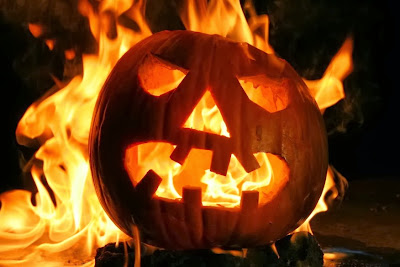
















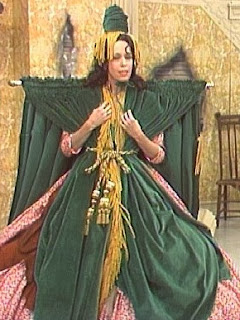




.jpg)
